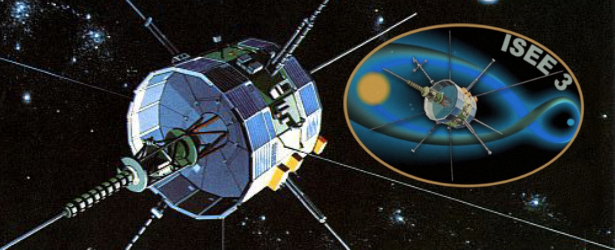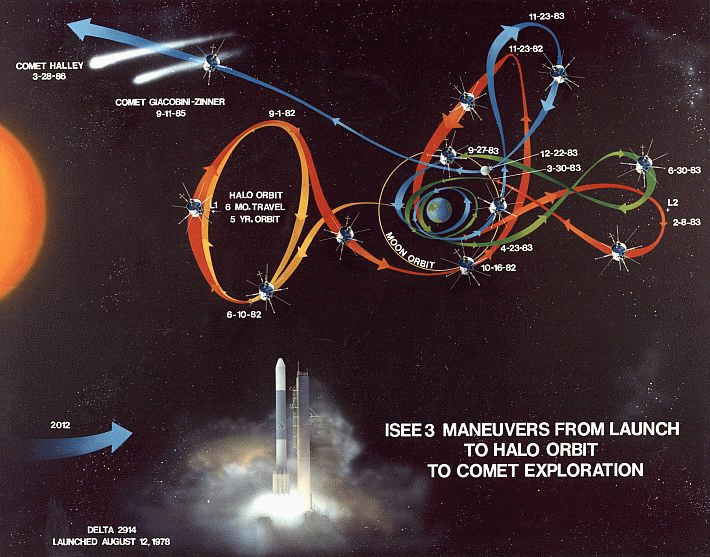Citizen scientists took control of long forgotten International Cometary Explorer

A group of citizen scientists who raised almost $160,000 to fund the process of taking control of 36-year-old International Cometary Explorer (ICE), formerly known as International Sun/Earth explorer 3 (ISEE-3), announced that after 16 years of silence two-way contact with the satellite has been established. The group plans to continue using the satellite for cometary explorations.
ISEE-3 Reboot Project is first major activity of Virgina (U.S) based nonprofit organization – Space College Foundation, Inc. (Space College), whose mission is to provide access to educational resources, career opportunities, and hands-on involvement in space exploration.
Over the coming days and weeks their team will make an assessment of the spacecraft's overall health and refine the techniques required to fire its engines and bring it back to an orbit near Earth.
First Contact with ISEE-3 was achieved at the Arecibo Radio Observatory in Puerto Rico on May 29, 2014, the group announced on their website.
"We would not have been able to achieve this effort without the gracious assistance provided by the entire staff at Arecibo. In addition to the staff at Arecibo, our team included simultaneous listening and analysis support by AMSAT-DL at the Bochum Observatory in Germany, the Space Science Center at Morehead State University in Kentucky, and the SETI Institute's Allen Telescope Array in California.
Of course this effort would not have been possible without the assistance of NASA and the Space Act Agreement crafted by NASA Headquarters, NASA Ames Research center, and the System Solar System Exploration Research Virtual Institute (SSERVI)."

ISEE3-ICE trajectory. Image credit: NASA
ISEE-3 satellite was launched August 12, 1978, into a heliocentric orbit. It was one of the three spacecraft, along with a mother/daughter pair (ISEE-1 and ISEE-2), of the ISEE (International Sun-Earth Explorer) international cooperative program between NASA and ESRO/ESA to study the interaction between the Earth's magnetic field and the solar wind.
ISEE-3 was the first spacecraft to be placed in a halo orbit at one of Earth-Sun Lagrangian points (L1). Renamed ICE, it became the first spacecraft to visit a comet, passing through the tail of Comet Giacobini-Zinner within about 7 800 km of the nucleus.

NASA officially said that there is no funding available to support an ISEE-3 effort but they do feel that the data that ISEE-3 could generate would have real value and that a crowd funded effort such as ours has real value as an education and public outreach activity.
The group said they will not be transmitting over the next few days after this success but concentrating on telemetry.
"When we are confident of the state of the spacecraft, we will be placing the bird in engineering telemetry mode as soon as possible. We will keep everyone updated on this. We are setting up, with the cooperation of Arecibo, a means to remotely command the spacecraft."
Here is how to stay up to date on their progress:
Twitter: http://twitter.com/isee3reboot
Facebook: http://www.facebook.com/ISEE3Reboot
Google+: http://plus.google.com/110871408384252629393/
Web: http://spacecollege.org/isee3

Commenting rules and guidelines
We value the thoughts and opinions of our readers and welcome healthy discussions on our website. In order to maintain a respectful and positive community, we ask that all commenters follow these rules.